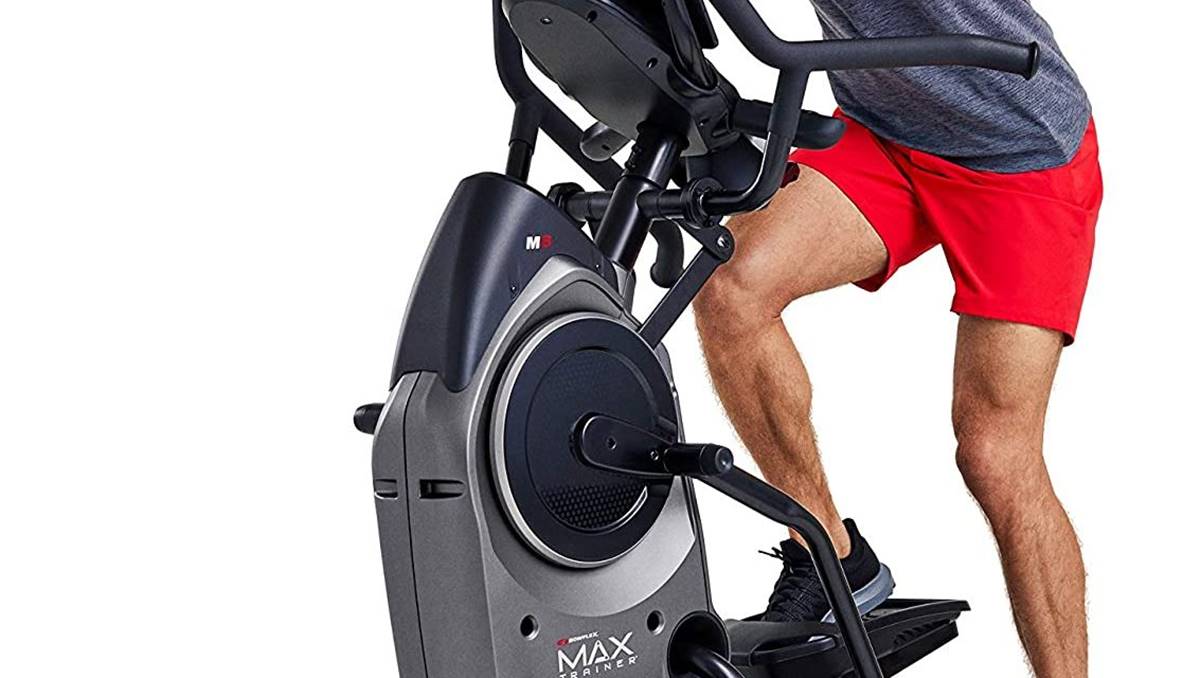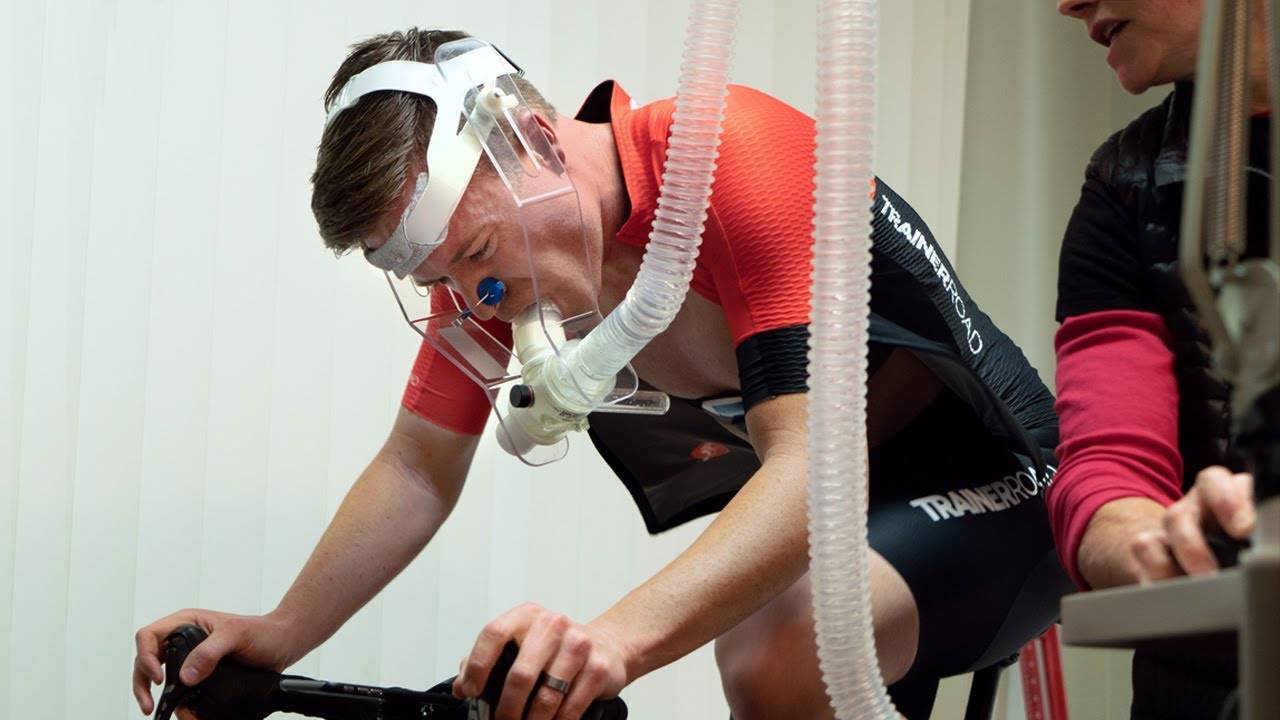Home>Misc>Featured>What Is The Proper Amount That An Athlete Should Take Between Interval Training And Rest Period


Featured
What Is The Proper Amount That An Athlete Should Take Between Interval Training And Rest Period
Modified: January 1, 2024
Introduction
Interval training is a popular and effective method of exercise among athletes of all levels. It involves alternating periods of intense exercise with periods of rest or low-intensity activity. This type of training is known to improve cardiovascular fitness, increase endurance, and enhance overall performance.
However, finding the proper amount of rest between interval training sessions can be a challenge. It’s crucial to strike a balance between pushing your limits and allowing your body to recover and adapt to the intense exercise. In this article, we will explore the importance of rest periods in interval training and discuss the factors that affect the proper amount of rest.
Proper rest between interval training sessions is vital for the body to repair and rebuild muscles, replenish energy stores, and reduce the risk of overtraining and injury. It allows the body to adapt to the demands of the high-intensity exercise and improves overall performance.
While there are general guidelines for rest periods in interval training, it’s important to note that the appropriate amount of rest can vary depending on several factors, including individual fitness levels, the intensity of the exercise, and the specific training goals.
In the following sections, we will delve deeper into understanding interval training, discuss the importance of rest periods in this type of training, explore the factors that influence the proper amount of rest, and provide recommendations for athletes to determine the most suitable rest periods between interval training sessions.
Understanding Interval Training
Interval training is a type of cardiovascular exercise that involves alternating between periods of high-intensity effort and periods of lower intensity or rest. It is a highly effective training method that can improve aerobic capacity, increase speed and endurance, and burn a significant amount of calories in a short amount of time.
The basic concept of interval training is to push your body to its maximum capacity during the high-intensity intervals and then allow it to recover during the rest periods. By doing so, you create an intense stimulus that challenges both your cardiovascular system and your muscles.
One of the key benefits of interval training is its ability to increase the efficiency of your workouts. Because you are exerting yourself at a higher intensity during the work intervals, you can achieve the same or even greater training benefits in a shorter amount of time compared to continuous moderate-intensity exercise.
Interval training can take many different forms, depending on the specific workout goals and individual preferences. Common examples include running or sprinting intervals, cycling or spinning intervals, and high-intensity interval training (HIIT) workouts that combine various exercises and movements.
During the high-intensity intervals, you should aim to work at a challenging intensity level, where you feel a significant increase in your heart rate and breathing rate. This can be achieved by increasing your speed, resistance, or effort level, depending on the type of exercise you are performing.
The duration of the work intervals and the rest periods can vary depending on your fitness level, the specific goals of your training, and the intensity of the workout. Work intervals typically range from 30 seconds to a few minutes, while rest intervals can range from equal to or longer than the work intervals.
It’s important to note that interval training can be highly demanding on the body, so it’s recommended to not perform this type of workout every day. Adequate rest and recovery between interval training sessions are crucial to allow your body to repair and adapt to the high-intensity demands.
Now that we have a good understanding of interval training, let’s explore the significance of rest periods in this type of exercise and how they impact performance and recovery.
Importance of Rest Periods in Interval Training
Rest periods play a crucial role in interval training as they allow your body to recover and adapt to the intense exercise. These periods of rest or low-intensity activity are important for several reasons:
- Muscle Recovery: During high-intensity intervals, your muscles undergo significant stress and fatigue. Rest periods provide an opportunity for your muscles to repair, rebuild, and grow stronger. This process, known as muscle recovery, is essential for improving athletic performance and preventing muscle imbalances and injuries.
- Energy Restoration: Intense exercise depletes your energy stores, especially muscle glycogen, which is the main source of energy for high-intensity efforts. Rest periods allow your body to replenish energy stores, ensuring that you have enough fuel to perform at your best during the next set of intervals.
- Cardiovascular Restoration: Interval training places significant demands on your cardiovascular system, including your heart and lungs. Rest periods provide much-needed recovery time for your cardiovascular system to return to a more stable state, reducing the risk of overexertion and allowing for optimal performance in subsequent intervals.
- Lactic Acid Clearance: During high-intensity exercise, lactic acid, a byproduct of anaerobic metabolism, accumulates in your muscles. This can lead to fatigue, muscle soreness, and a decrease in performance. Rest periods allow your body to clear lactic acid from your muscles, reducing muscle fatigue and improving overall recovery.
- Mental and Psychological Recovery: Interval training can be mentally taxing, requiring focus, determination, and the ability to push through discomfort. Rest periods provide a mental break, allowing you to regroup, refocus, and maintain motivation for the next set of intervals. This mental recovery is essential for sustaining the intensity and quality of your training.
By incorporating appropriate rest periods into your interval training routine, you give your body the time it needs to adapt and optimize the benefits of the intense exercise. It is essential to find the right balance between pushing your limits and allowing for sufficient rest and recovery.
Next, let’s explore the factors that influence the proper amount of rest in interval training and how to determine the most suitable rest periods for your specific training goals and needs.
Factors that Affect the Proper Amount of Rest
The proper amount of rest between intervals in interval training can vary based on several factors. Understanding these factors and how they impact the rest period is crucial for optimizing your training and performance. Here are some key factors to consider:
- Exercise Intensity: The intensity of the high-intensity intervals will have a direct impact on the required rest period. Higher intensity intervals will generally require longer rest periods to allow for full recovery before the next set. The more challenging the intervals, the more rest your body will need to recuperate adequately.
- Individual Fitness Level: Your current fitness level plays a significant role in determining the rest period. Beginners or those with lower fitness levels may require longer rest periods compared to well-trained athletes. As your fitness improves, you may be able to reduce the rest period and increase the intensity of the intervals.
- Training Goals: The goals of your interval training will influence the rest periods. If your aim is to improve endurance or cardiovascular fitness, shorter rest periods with more intense intervals may be beneficial. On the other hand, if your focus is on strength or power development, longer rest periods between intervals will allow for greater recovery and performance in subsequent sets.
- Duration of Intervals: The duration of the high-intensity intervals is another important consideration. Shorter intervals, such as 30 seconds, may require shorter rest periods compared to longer intervals, such as 2 minutes. The length of the intervals will determine the level of fatigue and metabolic stress on your muscles and energy systems.
- Training Frequency: The frequency of your interval training sessions also affects the rest period. If you are performing interval training more frequently, you may need longer rest periods to allow for proper recovery between sessions. Overtraining can lead to decreased performance and increased risk of injury, so it’s important to listen to your body and give it enough time to recover.
- Overall Training Load: Consider the overall volume and intensity of your training program. If you have been performing other intense workouts or engaging in sports-specific training, you may need longer rest periods between interval sessions to prevent overloading your body. Balancing your overall training load with appropriate rest is essential for avoiding burnout and maintaining consistent progress.
It’s important to note that these factors are not mutually exclusive, and they can interact with one another. Finding the optimal rest period involves experimenting, listening to your body, and adjusting based on your individual needs and responses to training.
In the next section, we will provide guidelines for determining rest periods in interval training and offer recommendations for athletes looking to find the proper amount of rest between their interval training sessions.
Guidelines for Determining Rest Periods in Interval Training
When it comes to determining the proper amount of rest between interval training sessions, there are some general guidelines that can help you find the right balance between work and recovery. Although individual variations in fitness levels, training goals, and other factors may require some adjustment, these guidelines can serve as a starting point:
- Listen to Your Body: Pay close attention to how your body feels during and after each interval session. If you find that you are consistently unable to maintain the desired intensity or that your performance significantly declines as the session progresses, it could be a sign that your rest periods are too short. Conversely, if you feel fully recovered and ready to push harder after each rest period, you may benefit from reducing the duration of the rest periods.
- Start with Equal Rest and Work Intervals: As a general rule of thumb, beginners or those new to interval training may find it helpful to start with an equal duration of work and rest intervals. For example, if you perform 30 seconds of high-intensity exercise, start with 30 seconds of rest. This allows for a balanced ratio of effort and recovery while providing a manageable starting point.
- Consider the Intensity: As the intensity of your intervals increases, you may need longer rest periods to fully recover. Intense efforts tax your musculoskeletal and cardiovascular systems to a greater extent, requiring more time for restoration. Gradually increase the duration of your rest periods as you increase the intensity of your intervals to ensure adequate recovery.
- Experiment with Rest Period Lengths: Don’t be afraid to experiment with different rest period lengths to find what works best for you. Try varying the duration of rest periods while keeping the work intervals constant. Pay attention to how rested and recovered you feel between sets and how your performance in the subsequent intervals is affected. Adjust the rest periods accordingly to achieve the optimal balance of intensity and recovery.
- Consider Your Training Goals: Tailor your rest periods to align with your specific training goals. If you are focusing on endurance or cardiovascular fitness, shorter rest periods with more intense intervals may be appropriate. If strength or power development is your aim, longer rest periods to allow for complete recovery between sets and maximize performance in subsequent intervals would be beneficial.
- Maintain Consistency: Consistency is key when it comes to interval training. Aim to perform your workouts at a regular frequency, allowing for adequate time to recover between sessions. This consistency will help you gauge how your body responds to the current rest period lengths and make any necessary adjustments as you progress in your training.
Remember, these guidelines are meant to serve as a starting point, and you may need to adjust them based on your individual needs and responses to training. It’s essential to find the right balance between pushing your limits and allowing for sufficient rest and recovery to optimize your performance and prevent overtraining.
In the next section, we will provide recommendations for athletes regarding the proper amount of rest between interval training sessions based on different training scenarios and goals.
Recommendations for Athletes: Proper Amount of Rest Between Interval Training Sessions
When it comes to determining the proper amount of rest between interval training sessions, there are several recommendations that athletes can consider based on their specific training scenarios and goals:
- For Endurance Training: If your primary goal is to improve endurance, shorter rest periods between intervals can be beneficial. Aim for rest periods that are approximately 50-75% of the duration of the work intervals. For example, if you perform 2-minute intervals, start with rest periods between 1-1.5 minutes. Gradually decrease the rest periods as your fitness level improves.
- For Strength and Power Development: If your focus is on building strength or power, longer rest periods are recommended to ensure full recovery and maximal performance in each interval. Rest periods of 2-3 minutes or longer can be appropriate for allowing your muscles and energy systems to fully recuperate between sets.
- For High-Intensity Interval Training (HIIT): HIIT workouts typically involve shorter work intervals at maximum effort followed by shorter rest periods. The rest periods can range from 10-30 seconds, allowing for partial recovery before the next intense effort. The key is to maintain a high level of intensity throughout the workout while still allowing for brief recovery periods.
- For Beginners: If you are new to interval training or have a lower fitness level, it’s important to start with longer rest periods to allow sufficient recovery. Begin with equal rest and work intervals and gradually decrease the rest periods as your fitness improves and you become more comfortable with the intensity of the intervals.
- For Advanced Athletes: Advanced athletes may benefit from implementing variable rest periods in their interval training. This can involve manipulating the duration of rest periods between intervals within the same session or varying the rest periods between different training sessions throughout the week. This provides a more progressive and challenging training stimulus, promoting further adaptation and performance gains.
- For Recovery Purposes: In some cases, interval training can be used as a recovery tool itself. Lighter intensity intervals or active recovery periods between higher intensity intervals can serve as a way to promote blood flow, reduce muscle soreness, and aid in the recovery process. These intervals can have shorter rest periods or even be performed in a continuous circuit format without explicit rest periods.
It’s important to remember that these recommendations are not fixed rules but rather general guidelines. Individual variations, such as fitness level, training history, and specific goals, may require adjustments to the recommended rest periods. Experimentation and listening to your body’s response to different rest periods are key to finding what works best for you.
Ultimately, the proper amount of rest between interval training sessions will depend on your individual needs, goals, and how well you recover and adapt to the training stimulus. It’s important to prioritize rest and recovery to ensure long-term progress, minimize the risk of overtraining, and optimize your performance in future training sessions.
Now that we’ve covered recommendations for rest periods, let’s summarize the key points discussed in this article.
Conclusion
Interval training is a powerful and effective method of exercise for athletes seeking to improve their performance. Finding the proper amount of rest between interval training sessions is essential to ensure proper recovery, prevent overtraining, and maximize the benefits of the intense exercise.
We explored the importance of rest periods in interval training, understanding that they allow for muscle recovery, energy restoration, cardiovascular restoration, lactic acid clearance, and mental and psychological recovery. These rest periods are crucial for optimizing performance and achieving training goals.
Several factors influence the proper amount of rest, including exercise intensity, individual fitness level, training goals, duration of intervals, training frequency, and overall training load. It’s important to listen to your body, experiment with different rest period lengths, and adjust based on your individual needs and responses to training.
Based on these considerations, we provided guidelines for determining rest periods in interval training, such as starting with equal rest and work intervals, considering the intensity and duration of intervals, and maintaining consistency in your training. We also offered recommendations for different training scenarios, including endurance training, strength and power development, high-intensity interval training (HIIT), beginners, advanced athletes, and recovery purposes.
Remember, finding the optimal balance between work and rest is a continuous process. It requires attentiveness to your body’s needs and adjustments to your rest periods as you progress in your training and adapt to the demands of interval training.
By prioritizing rest and recovery, you can maximize the benefits of interval training, improve your athletic performance, and minimize the risk of injuries and burnout. So, take the time to find the proper amount of rest between your interval training sessions, and watch as your fitness and performance soar to new heights.









